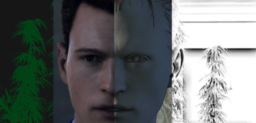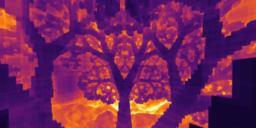- the article provides a very detailed look at how a frame in Detroit Become Human is being drawn
- presents insights into how the shading pipeline is implemented, details into implementation for the various resource passes, vertex formats, interactions with animations, effects implementation, etc
- additionally shows a flow graph of how a full frame is structured with images of the resources involved in each pass

- the example project presents an example of how to use Slang with WebGPU
- shows how to use CMake integration to compile shaders from slang to WGSL (WebGPU shading language)
- additionally shows how to use the reflection API to generate binding helpers

- In the working document, Timothy Lottes records and suggests solutions for GPU programming issues in a compute shader context
- covers many problematic areas, from performance hints over shader compiler improvements, caching related, buffer access patterns, and much more
- provides example cases that offer insights into current shortcomings, performance issues, and shader compiler bugs

- the article presents how to use RustGPU to compile a compute kernel
- discusses the implementation details and interactions with the ecosystem
- additionally presents how RustGPU enables shader logic to be run on the CPU

- the article discusses the efficient implementation of Sparse Voxel Octrees
- presents how to build the required tree structures and traverse the created trees
- additionally provides advice to improve debuggability, performance, and robustness of the initial implementation

- The article presents the new Fragment Pre-pass hardware implementation available in upcoming Arm GPUs
- explains how the technique works, what it enables, and what are the limitations
- additionally, it discusses best practices for performance and shows some performance numbers

- My list of recommendations for books
- Covering Computer graphics, engine design, algorithms, collision detection, as well as knowledge management
- contains resources for beginners as well as advanced programmers

- A summary of the chapter Differentiable Graphics with Slang.D for Appearance-Based Optimization included in GPU Zen 3
- the article focuses on the practical usage of stochastic gradient descent and optimization from beginning to a working minification system for materials

- the article presents insights into how to upscale retro pixel art games for higher resolutions than the source material
- The suggested solution is using nearest for vertical and linear for horizontal

- the Vulkan code example presents how to use various modern Vulkan concepts to create compact sample applications
- presents how to use descriptor management, specialization constants, timeline semaphores, ImGui integration, etc.

Thanks to Aras Pranckevičius for support of this series.
Would you like to see your name here too? Become a Patreon of this series.